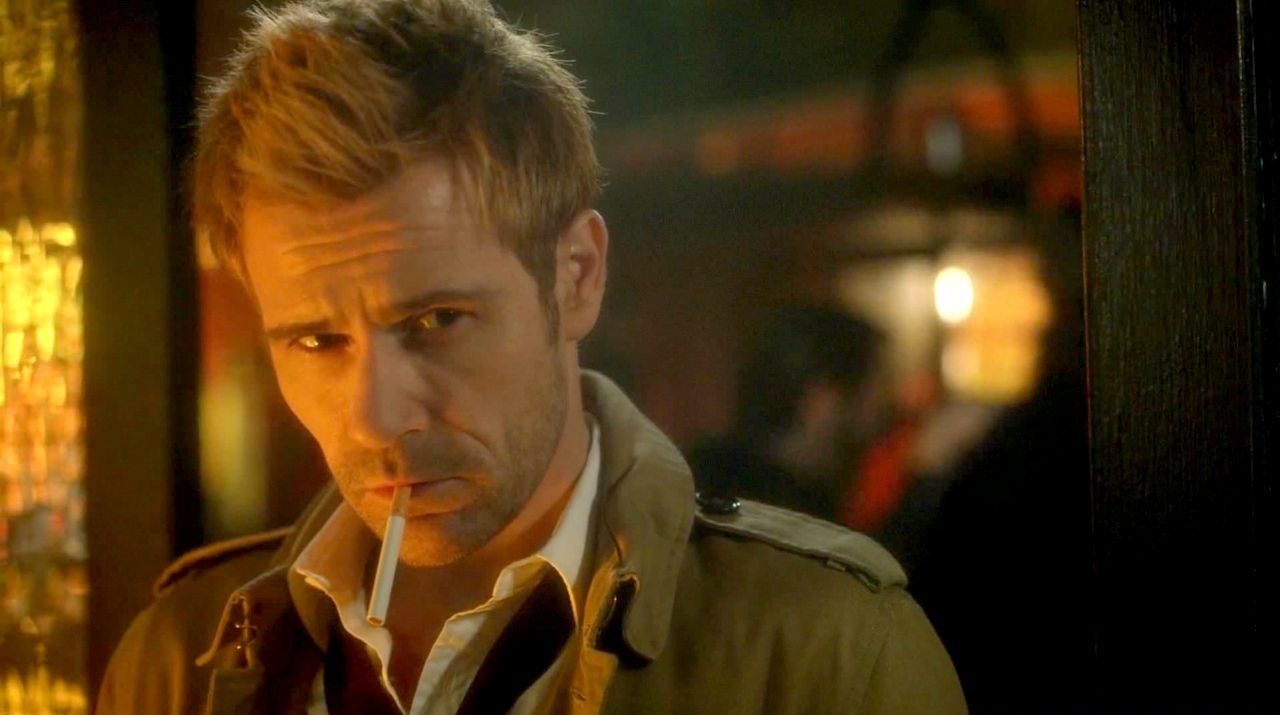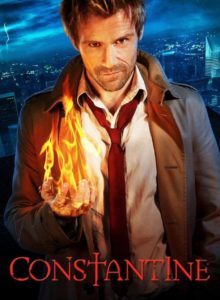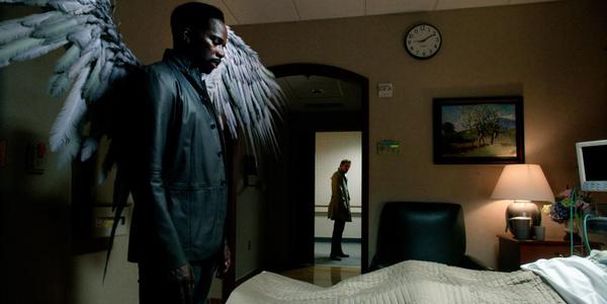[stextbox id=”grey” caption=”Constantine (2014-2015)” float=”true” align=”right” width=”200″]
Executive producers: Daniel Cerone, David S. Goyer, Mark Verheiden
Developed by: Daniel Cerone, David S. Goyer
Starring: Matt Ryan, Angélica Celaya, Charles Halford, Harold Perrineau
Production Company: Ever After/Phantom Four Productions, DC Entertainment, Warner Bros. Television
Distributor: NBC (TV)
Country: US
Rating: ★★★★
(8/10)
More info
[/stextbox]
While a perfect Hellblazer adaptation may never be fully realised on network television, the first season of CONSTANTINE remains the most interesting debut of the season. Without mainstream appeal of Gotham, or the sheer fun of The Flash, it could be argued that NBC’s dip into the comic book world was still an entirely successful one in all the areas that count. That is, of course, except for the ratings, where the magic and mysticism of the (eventually) chain-smoking hero failed to fully connect with audiences.Yet given half a chance, the show has a lot to offer.
Based on the character that first cameoed in Alan Moore’s The Saga of the Swamp Thing #25 (June 1984), and completely revealed a year later in The Saga of the Swamp Thing #37 (June 1985), he is perhaps best known as the lead in the staggering 15 year run of Vertigo’s Hellblazer. The TV series doesn’t represent the first time that DC/Vertigo has tried to transition the character to the screen, with the 2005 film Constantine taking elements from the Garth Ennis arc “Dangerous Habits,” along with Jamie Delano’s “Original Sins”. Although highly Americanised, especially the casting of Keanu Reeves in the titular role, the essence of the comics could be glimpsed in there. However, fans remained keenly aware that a more accurate portrayal of the British icon would make for one hell of a ride. With a broader plot built around a ‘rising darkness’, this CONSTANTINE comes a little closer to that vision.
The first season of CONSTANTINE immediately distinguishes itself from its contemporaries by not being a straight-up origin story. There are no lightning strikes, pearls spilled in an alleyway or flashbacks to island exile in the pilot episode, “Non Est Asylum”, which sees John Constantine (Matt Ryan) emerging from an asylum after dealing with the aftermath of an exorcism that condemned a young girl’s soul into damnation, makes allusions to the fateful Newcastle disaster, but Constantine comes mostly fully formed. The trenchcoat, the scruffy hair, the working class accent and attitude are all present, although notably absent is his trademark ubiquitous cigarette in these early episodes. Matt Ryan takes to the character effortlessly, wearing every bit of the horror that his character must have seen over the years. It’s a strong opening, even if it feels very much like a “pilot” in a familiar plot about an inherited pendant and token damsel Liv Aberdine (Lucy Griffiths), a character who is ultimately perfunctory.
The series really gets going with the introduction of psychic Zed Martin (Angélica Celaya), introduced at the tail end of the pilot, but becoming a series regular from the sophomore episode. In many ways, her arc forms the central focus of the series. In the excellent “The Saint of Last Resorts” two-parter that spanned the mid-season break, Zed’s kidnapping and revelations of her past but her at odds with Constantine, instantly creating conflict within the group. In “Angels and Ministers of Grace”, she must make a choice between her visions and her own health, and it is the kind of character building piece that one doesn’t typically see until much deeper into a show’s run. Placed here, it was a bold and intriguing standalone episode that deepened audience affection for the character.
The character building extends beyond Zed. In “Quid Pro Quo”, when the daughter of semi-immortal taxi driving sidekick Chas (Charles Halford) is threatened, he must put his faith in the roguish Constantine completely. Given that Constantine has previously made the decision (in episode 4, “A Feast of Friends”) to condemn a former member of the Newcastle crew to the afterlife in order to dispatch a demon, it’s a decision that will leave the audience divided. The enigmatic angel Manny (LOST‘s Harold Perrineau) is almost the embodiment of this notion, literally turning up in other people’s bodies at critical moments, but unable (or unwilling) to help. In “Angels and Ministers of Grace,” Manny is trapped in the body of a human briefly, and he too is given a chance to expand his character from merely being a the spiritual equivalent of The X-Files‘ Deep Throat.
Relying on the characters to do the unexpected, even the morally questionable, is what made the first season of CONSTANTINE so intriguing. On one hand, the series offers TV audiences the very familiar concept of a supernatural detective found in Kolchak: The Night Stalker, its cousin The X-Files and of course, the Hellblazer comic series that spawned this. As such, there as some episodes that feel incredibly episodic and ‘monster of the week’, with “The Devil’s Vinyl” (haunted record), “Rage of Caliban” (spirit of an evil child), “A Whole World Out There” (college kids and the occult) and even season closer “Waiting for the Man” (serial killer) falling into this mould. Some are done more successfully than others, and elements of the series are perhaps hamstrung by the ‘PG’ tone of the scripts.
Yet while it may have more in common with the New 52 version of the comics character than Hellblazer, the spirit of the rebel still rages strong throughout the series. In the aforementioned “Quid Pro Quo”, Constantine shouts down a possessing demon in iconic fashion. “Face me like a real man,” he dryly quips. “Not with your hand up another’s ass like a puppet.” That John Constantine could have stepped straight out of the old school comics, and it was a version of the character, complete with chain-smoking, that was emerging towards the end of the series.
If CONSTANTINE isn’t renewed for a second season, it’s ultimately a case of a missed opportunity. The series left us with a bombshell revelation about one of the major players, and there are so many loose threads left hanging about the nature of the rising darkness that permeates this season, or even just more on Zed’s background. There were also so many Easter eggs to other folks in the DCU such as Doctor Fate, The Spectre, and all the secrets The House alone contained. Other shows have had shaky starts in the last few years, and if we’d judged Marvel’s Agents of S.H.I.E.L.D. on its first season, and indeed its declining ratings prior to Captain America: The Winter Soldier, then it may not have led to a superb second season and the spin-off Agent Carter. Similarly, Arrow‘s first season was dark and even for the most devoted fans, it tended towards the melodramatic. It’s a blessing and a curse that CONSTANTINE came out of the gate so strongly: while we may never get to see how the story ultimately ends, at least we’ve had the pleasure of 13 solid episodes of television while it lasted.







